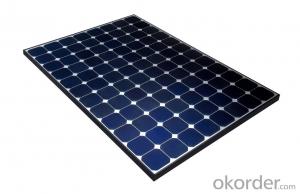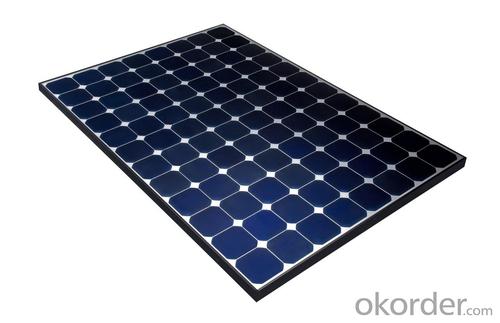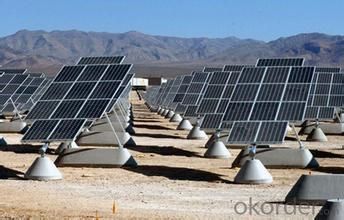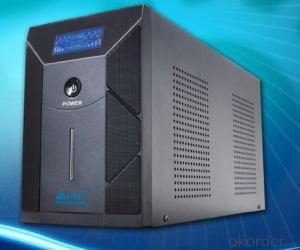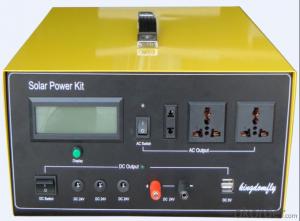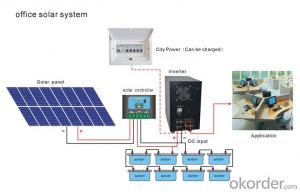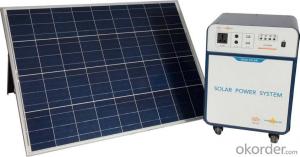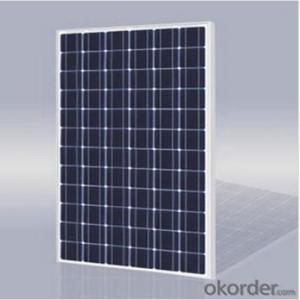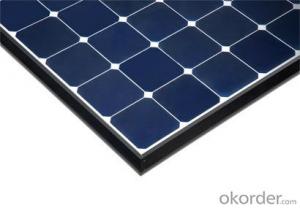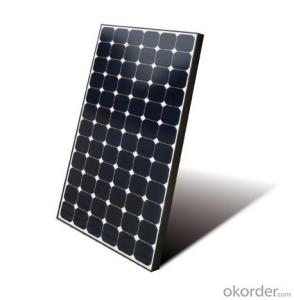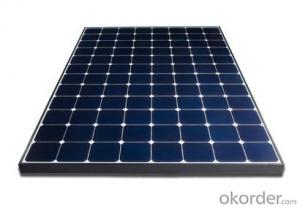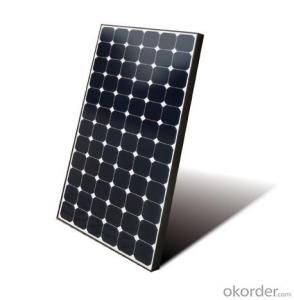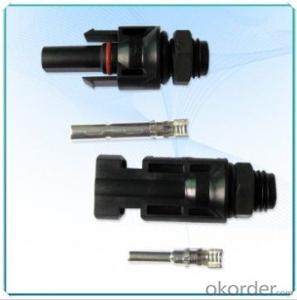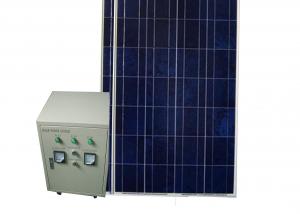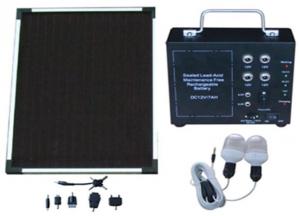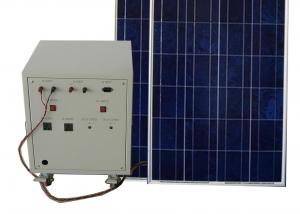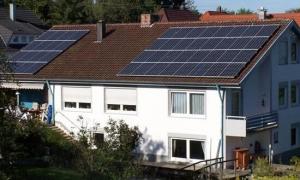Manitoba Solar Energy Systems - CNBM On Grid System 70000W with Certificate UL TUV CE
- Loading Port:
- Shanghai
- Payment Terms:
- TT OR LC
- Min Order Qty:
- 10 watt
- Supply Capability:
- 1000 watt/month
OKorder Service Pledge
OKorder Financial Service
You Might Also Like
Specification
CNBM On Grid System 70000W with Certificate UL TUV CE
Product description
A photovoltaic (in short PV) module is a packaged, connected assembly of typically 6×10 solar cells. Solar Photovoltaic panels constitute the solar array of a photovoltaic system that generates and supplies solar electricity in commercial and residential applications. Each module is rated by its DC output power under standard test conditions, and typically ranges from 100 to 365 watts. The efficiency of a module determines the area of a module given the same rated output – an 8% efficient 230 watt module will have twice the area of a 16% efficient 230 watt module. There are a few commercially available solar panels available that exceed 22% efficiency[1] and reportedly also exceeding 24%.[2][3] A single solar module can produce only a limited amount of power; most installations contain multiple modules. A photovoltaic system typically includes a panel or an array of solar modules, a solar inverter, and sometimes a battery and/or solar tracker and interconnection wiring.
The price of solar power, together with batteries for storage, has continued to fall so that in many countries it is cheaper than ordinary fossil fuel electricity from the grid (there is "grid parity").[4]
Off-the-grid is a system and lifestyle[1] designed to help people function without the support of remote infrastructure, such as an electrical grid. In electricity, off-grid can be stand-alone power system or mini-grids typically to provide a smaller community with electricity. Off-grid electrification is an approach to access electricity used in countries and areas with little access to electricity, due to scattered or distant population. The term off-the-grid (OTG) can refer to living in a self-sufficient manner without reliance on one or more public utilities. People who adopt this lifestyle are called off-gridders.[2]
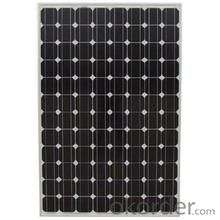
Application
Industrial
Commercial
Residential
Feature
Residential, grid-connected rooftop systems which have a capacity more than 10 kilowatts can meet the load of most consumers.[2] They can feed excess power to the grid where it is consumed by other users. The feedback is done through a meter to monitor power transferred. Photovoltaic wattage may be less than average consumption, in which case the consumer will continue to purchase grid energy, but a lesser amount than previously. If photovoltaic wattage substantially exceeds average consumption, the energy produced by the panels will be much in excess of the demand. In this case, the excess power can yield revenue by selling it to the grid. Depending on their agreement with their local grid energy company, the consumer only needs to pay the cost of electricity consumed less the value of electricity generated. This will be a negative number if more electricity is generated than consumed.[3] Additionally, in some cases, cash incentives are paid from the grid operator to the consumer.
Packaging
With carton and box
- Q: Can a solar energy system be installed on a tile roof?
- Yes, a solar energy system can be installed on a tile roof. In fact, tile roofs are one of the most common types of roofs where solar panels can be installed. Special mounting brackets are used to secure the panels onto the tiles without damaging them. The process requires careful installation techniques to ensure the integrity of both the roof and the solar system.
- Q: Can solar energy systems be used in areas with high levels of air pollution from industrial activities?
- Yes, solar energy systems can still be used in areas with high levels of air pollution from industrial activities. While air pollution may affect the efficiency of solar panels to some extent, they can still generate electricity and contribute to reducing the overall carbon footprint. Additionally, using solar energy can help to diversify the energy mix and reduce reliance on polluting sources.
- Q: How do solar energy systems contribute to reducing peak demand on the electrical grid?
- Solar energy systems contribute to reducing peak demand on the electrical grid by generating electricity during the day, when demand is typically highest. This reduces the reliance on conventional power sources during peak times, thus alleviating strain on the grid and potentially avoiding blackouts or brownouts. Additionally, excess solar energy generated during the day can be stored in batteries or fed back into the grid, further reducing peak demand and providing a more stable and sustainable energy supply.
- Q: Are there any limitations to the amount of electricity a solar energy system can generate?
- Yes, there are limitations to the amount of electricity a solar energy system can generate. The primary limitation is the availability of sunlight. Solar panels require direct sunlight to generate electricity, so factors such as weather conditions, geographical location, and time of day can affect the amount of sunlight received. Cloudy or rainy days can significantly reduce the electricity output of a solar energy system. Another limitation is the physical space available for installing solar panels. The size and number of panels that can be installed depend on the available roof or ground space. Limited space can restrict the overall capacity of the system and, consequently, the amount of electricity it can generate. Additionally, the efficiency of solar panels is a determining factor. The efficiency of converting sunlight into electricity varies depending on the type and quality of solar panels used. Higher efficiency panels can generate more electricity than lower efficiency ones. Furthermore, solar energy systems are also subject to degradation over time. Solar panels experience a gradual decrease in efficiency as they age due to factors like exposure to sunlight, temperature fluctuations, and environmental conditions. This degradation can reduce the overall electricity generation capacity of the system. Finally, energy storage is a limitation. Solar energy systems generate electricity during the day, but the demand for electricity often remains constant throughout the day and night. Without an efficient energy storage system, excess electricity generated during the day is wasted if not used immediately. Therefore, the inability to store excess electricity limits the overall amount that can be generated by a solar energy system. In summary, while solar energy systems offer a sustainable and renewable source of electricity, there are limitations to the amount they can generate due to factors such as sunlight availability, physical space, panel efficiency, system degradation, and energy storage capabilities.
- Q: Can solar energy systems be used in powering disaster relief centers or emergency shelters?
- Yes, solar energy systems can definitely be used in powering disaster relief centers or emergency shelters. In fact, solar power is increasingly being utilized in such situations due to its numerous benefits. One of the key advantages of solar energy systems is their ability to function independently of the grid. During natural disasters or emergencies, the conventional power grid may be disrupted or completely unavailable. In such situations, solar panels can generate electricity from sunlight, providing a reliable and sustainable source of power for essential operations in relief centers or shelters. Solar energy systems are also highly portable and modular, making them ideal for temporary installations. They can be quickly deployed and set up in disaster-stricken areas, providing immediate power for lighting, communication devices, medical equipment, and other critical needs. Additionally, solar energy systems can be easily expanded or modified to meet the increasing energy demands of relief centers or shelters as the situation evolves. Furthermore, solar power systems have minimal environmental impact compared to traditional fuel-based generators. They produce clean energy without releasing harmful pollutants or greenhouse gases, which is particularly important in disaster-stricken areas where air quality may already be compromised. Lastly, solar energy systems offer long-term cost savings. Once installed, solar panels require minimal maintenance and have a lifespan of 25-30 years. This reduces the reliance on expensive and often scarce fuel supplies, allowing relief centers and emergency shelters to allocate their resources more efficiently. In conclusion, solar energy systems are a reliable, sustainable, and cost-effective solution for powering disaster relief centers or emergency shelters. Their ability to function independently, portability, minimal environmental impact, and long-term cost savings make them an excellent choice for powering critical operations during times of crisis.
- Q: Can solar energy systems be used in powering street cameras or surveillance systems?
- Yes, solar energy systems can be used to power street cameras or surveillance systems. Solar energy is a sustainable and renewable source of power that can provide a reliable and independent energy supply for street cameras and surveillance systems. By installing solar panels on rooftops or mounting them on poles near the cameras, the panels can capture sunlight and convert it into electricity. This generated electricity can then be stored in batteries, which can be used to power the cameras and surveillance systems even during periods of low sunlight or at night. Using solar energy for street cameras and surveillance systems not only reduces the reliance on traditional power sources but also helps in reducing carbon emissions and minimizing the overall environmental impact. Additionally, solar-powered systems can be cost-effective in the long run as they eliminate the need for expensive cabling and provide a self-sustaining energy solution. Overall, solar energy systems are an excellent choice for powering street cameras and surveillance systems, offering numerous benefits such as sustainability, reliability, cost-efficiency, and environmental friendliness.
- Q: How does the efficiency of solar panels degrade over time?
- The efficiency of solar panels degrades over time due to various factors. One of the primary reasons is the gradual wear and tear of the panel's components. Over the course of several years, exposure to sunlight, weather conditions, and temperature fluctuations can cause the deterioration of materials such as the solar cells, electrical connections, and protective coatings. Another factor contributing to the degradation of solar panel efficiency is the accumulation of dirt, dust, and debris on the panel's surface. As these particles accumulate, they create a barrier between the sunlight and the solar cells, reducing the amount of light that can be converted into electricity. Additionally, the performance of solar panels can be affected by the natural aging process of the materials used in their construction. This can result in a decrease in the panel's ability to absorb sunlight and convert it into electricity efficiently. Furthermore, the efficiency of solar panels can be impacted by potential manufacturing defects or poor installation practices. These issues may not become apparent immediately but can lead to a gradual decline in performance over time. It is worth mentioning that the rate at which solar panel efficiency degrades can vary depending on the quality of the panels, maintenance practices, and environmental conditions. Generally, most solar panels experience a modest degradation rate of around 0.5-1% per year, meaning that after 25-30 years, the efficiency may decrease by approximately 20-30%. To mitigate the degradation of solar panel efficiency, regular maintenance and cleaning are recommended. This includes periodic inspection for any signs of damage, cleaning the surface to remove dirt and debris, and ensuring proper wiring and connections. Additionally, advancements in solar panel technology and manufacturing processes are continuously being made to improve their longevity and overall performance.
- Q: How does the quality of solar panels affect their performance?
- The performance of solar panels is greatly influenced by their quality, which is determined by various factors. Advanced technology and materials are used to design and manufacture high-quality solar panels, directly affecting their efficiency, durability, and reliability. Efficiency, a crucial aspect of solar panels, is greatly affected by their quality. High-quality panels are constructed using superior materials and advanced manufacturing techniques, enabling them to convert sunlight into electricity more effectively. As a result, they can generate more electricity from the same amount of sunlight compared to lower-quality panels. Durability, another important factor, is also influenced by the quality of solar panels. High-quality panels are specifically designed to withstand harsh weather conditions, such as extreme temperatures, strong winds, and heavy snow loads. Moreover, they are less susceptible to degradation, ensuring a longer lifespan and consistent performance over time. The quality of solar panels is closely linked to their reliability. High-quality panels are built to last, reducing the likelihood of malfunctions or breakdowns. They undergo rigorous testing and quality control processes to ensure that they can consistently deliver their rated power output for many years. Furthermore, high-quality solar panels often come with industry-leading warranties, providing reassurance to owners. These warranties cover defects, performance issues, and other potential problems, guaranteeing that customers receive support and replacements when necessary. To summarize, the performance of solar panels is greatly influenced by their quality. Investing in high-quality panels can result in increased energy production, enhanced durability, and improved reliability. Ultimately, this leads to higher returns on investment and a more sustainable energy solution.
- Q: What is the impact of lightning on the performance of solar panels?
- The performance of solar panels can be significantly affected by lightning, although it is relatively uncommon. When lightning strikes, it can cause physical damage to the solar panels, such as breaking the glass or causing harm to the wiring. Consequently, this damage can result in a decrease or even a complete loss of power generation from the affected panel. Furthermore, lightning can also create electrical surges that may harm the inverter, which is a vital component responsible for converting the direct current (DC) electricity produced by the panels into alternating current (AC) electricity for usage in homes or businesses. If the inverter is harmed, it can lead to a complete shutdown of the solar panel system until necessary repairs or replacements are carried out. To reduce the impact of lightning on solar panels, there are various protective measures that can be taken. One common approach is to install a lightning protection system that includes lightning rods or conductive pathways to safely direct the electrical discharge into the ground. This method helps to prevent lightning strikes from directly hitting the solar panels, thus reducing the risk of damage. Additionally, surge protectors can be installed to safeguard the inverter and other sensitive electronic components of the solar panel system. These surge protectors work by redirecting excessive electrical energy from lightning strikes away from the system, thereby safeguarding it from potential harm. Although lightning strikes can pose a threat to the performance of solar panels, it is important to note that modern solar panel systems are generally designed to withstand severe weather conditions, including lightning. Manufacturers often subject their panels to rigorous testing to ensure their durability and resistance to lightning strikes. Overall, while the impact of lightning on solar panels can be disruptive and expensive, implementing appropriate protective measures can help minimize the risk and ensure the long-term performance and reliability of the solar panel system.
- Q: Can solar energy systems be used in areas with limited access to clean water?
- Yes, solar energy systems can definitely be used in areas with limited access to clean water. Solar energy systems are independent of water resources and do not require water for their operation. They can be installed and utilized in areas where clean water is scarce, making them a viable and sustainable solution for energy generation in such regions.
Send your message to us
Manitoba Solar Energy Systems - CNBM On Grid System 70000W with Certificate UL TUV CE
- Loading Port:
- Shanghai
- Payment Terms:
- TT OR LC
- Min Order Qty:
- 10 watt
- Supply Capability:
- 1000 watt/month
OKorder Service Pledge
OKorder Financial Service
Similar products
Hot products
Hot Searches
Related keywords
